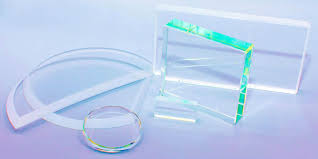-
أخر الأخبار
- استكشف
-
الصفحات
-
المدونات
-
Courses
-
الافلام
Why Optical Devices Lose Accuracy: The Role of High-Quality Window Glass

If you work with cameras, sensors, or laser systems, you’ve probably faced image distortion, light scattering, or inaccurate readings. These issues often aren’t due to calibration errors or faulty electronics — they stem from the quality of the window glass used in your optical equipment.
In optoelectronic systems, every surface between light and sensor matters. A high-quality window glass isn’t just a protective layer — it’s a critical optical element that ensures precision, durability, and performance across a wide wavelength range.
Why Window Glass Quality Matters in Optoelectronics
In the optoelectronic industry, devices like photodetectors, laser rangefinders, and imaging sensors rely on consistent light transmission. Poor-quality glass can cause light refraction, wavelength shift, and scattering, which directly impact device accuracy.
Modern window glass is designed to maintain optical integrity while protecting sensitive components from environmental stress, such as dust, humidity, and temperature variations. For engineers, this means higher signal stability and longer equipment lifespan.
Key Properties of Optical-Grade Window Glass
When it comes to high-performance applications, not all glass is the same. Optical-grade glass materials are engineered with precise specifications to enhance clarity and efficiency. Key features include:
-
High Transmission Rate: Allows maximum light throughput with minimal loss.
-
Anti-Reflective Coating: Reduces reflection and glare for improved sensor performance.
-
Thermal Resistance: Maintains optical stability under temperature changes.
-
Scratch and Chemical Resistance: Protects delicate optical surfaces from environmental damage.
-
Wavelength Compatibility: Works across visible, infrared, and UV ranges.
These features ensure that every photon passing through the system is accurately captured, improving both performance and data quality.
Common Applications of Window Glass in the Optoelectronic Industry
High-quality optical window glass is used in many advanced systems where precision is non-negotiable:
-
Laser Optics: Protects laser diodes and lenses while maintaining beam quality.
-
Imaging Devices: Ensures accurate color and light transmission for sensors and cameras.
-
Spectrometers: Provides clear optical paths for light analysis.
-
Display Modules: Enhances brightness and contrast in AR/VR devices.
-
Environmental Sensors: Shields sensors without affecting sensitivity.
Each of these applications relies on superior optical transmission and material stability—qualities that only precision-engineered glass can deliver.
Choosing the Right Window Glass for Your Equipment
Selecting the right glass type depends on your system’s wavelength range, operating environment, and mechanical requirements. Materials like fused silica, borosilicate, and sapphire are commonly used for their high optical and thermal performance.
If you’re developing or upgrading optical systems, it’s essential to choose glass that matches your specific transmission spectrum and environmental tolerance. Low-quality substitutes may seem cost-effective initially but can cause performance degradation and higher maintenance costs later.
Why Investing in Optical-Grade Glass Pays Off
The optoelectronic industry demands precision and reliability. High-quality window glass ensures better performance, longer device life, and reduced calibration errors. It’s not just a component — it’s a performance multiplier.
When you invest in premium glass, you’re also investing in long-term optical stability, reduced system downtime, and improved data accuracy — all critical for professional-grade optical applications.
Conclusion
If your optical devices are underperforming, it’s time to look beyond the electronics. The real issue might lie in your window glass. Upgrading to high-grade optical glass ensures perfect light transmission, protection, and precision that the optoelectronic industry depends on. In today’s high-accuracy world, the clarity of your optics defines the clarity of your results.
- Art
- Causes
- Crafts
- Dance
- Drinks
- Film
- Fitness
- Food
- الألعاب
- Gardening
- Health
- الرئيسية
- Literature
- Music
- Networking
- أخرى
- Party
- Religion
- Shopping
- Sports
- Theater
- Wellness


